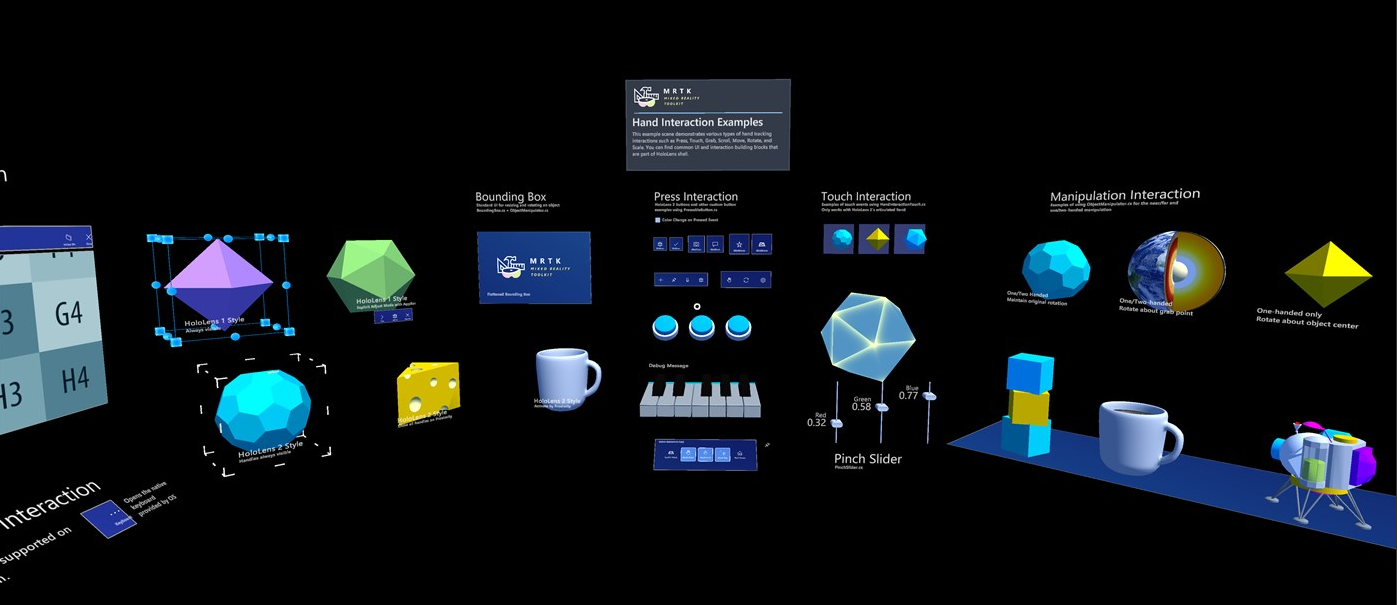Note
Access to this page requires authorization. You can try signing in or changing directories.
Access to this page requires authorization. You can try changing directories.
If you’re developing applications in mixed reality to run on the HoloLens or immersive headsets such as the HP Reverb 2, you’ll need to include 3D holographic models in your app for it to be rich in content. Thankfully, you don’t have to be a 3D artist, or have one on your team, to assemble the assets you need to realize your vision. There are many ways to obtain pre-made models free, or at a reasonable cost, which we'll introduce here. We’ll also discuss how you can get started on creating your own 3D models.
Optimize and convert 3D models
For general best practices on preparing your own 3D models to be used as holograms, see our real-time 3D model conversion and optimization guide.
If you're looking for other tools to post-process 3D models, you can optimize any glTF 2.0 model using the Windows Mixed Reality Asset Converter available on GitHub. This toolkit includes a command line tool that uses these steps in sequence in order to convert a glTF 2.0 core asset for use in the Windows Mixed Reality home.
Check your 3D models
To check your 3D models, we recommend that you use the Babylon.js 3D viewer tool in the scene explorer.
For Unity Developers: Mixed Reality Toolkit and Asset Store
If you’re a Unity developer and need objects that you can use for spatial interaction and UI, you don’t have to go far. If you're using our Mixed Reality Toolkit (MRTK) in your project, you already have a wide range of built-in objects including bounding boxes, reusable buttons, hand menus, slates, sliders and more.

If you’re new to MRTK, download the MRTK Examples Hub app and have a look around.
Pre-made Assets
There are numerous Web sites that offer pre-made 3D and CAD (Computer-Aided Design) models and animations at reasonable or no cost. Some of the more popular ones are:
CAD Models HoloLens in the Microsoft store
Mixamo (models and animations)
Blender Market (Learn more about the Blender modeling tool below)
Make your own 3D Models
If you can't find pre-made 3D models that fulfill your needs, it may be worth your while to develop some 3D modeling skills or have someone on your team do so. At its highest level, 3D modeling is a vast, complex skill that encompasses numerous subdisciplines:
As you can imagine, it requires considerable time and effort to become a highly proficient 3D modeler. The good news is that you don’t have to become an expert to reap some benefits; just having a few basic skills in your toolbox, such as the ability to change materials on a model or convert a high-poly model to a low-poly one, can result in significant improvements to your apps.
Here are some of the more popular 3D modeling programs.
Blender is a popular choice partly because 3D modeling tools tend to be expensive and Blender is free. In past years, Blender was viewed as less capable than the high-end tools in this category. However, it has undergone substantial improvements in the last few versions and is now considered by many to be a fully professional-level tool.
CAD (Computer-Aided Design)
CAD programs also let you build 3D models and may offer you advanced domain-specific features that you won’t get in one of the programs listed above. For example, if your app targets infrastructure, buildings, circuits, telecommunications networks, thermodynamics, mechanical parts, medical devices, or manufacturing, then a CAD program may be the best choice for you. You can create models in the CAD program and then convert them into a format that can be used for mixed reality apps.
Here are some of the more popular CAD programs.
Learning Resources
The best place to start looking for tutorials, videos, and other learning resources is on the Web site of your chosen tool. Large streaming video sites like YouTube have many tutorials about 3D modeling, but since anyone can post a video, the quality can vary widely. Some tools have dedicated YouTube channels--two examples are Blender and Maya.
Another free, worthwhile resource may be your local public library. Many libraries offer streaming eLearning videos on their Web sites, and there tend to be many computer articles from high-quality sources. For example, the San Francisco public library offers videos from LinkedIn Learning.
If you’re willing to pay, here are some of the more popular video tutorial sites:
Using 3D Viewer on HoloLens 2 and HoloLens (1st gen)
HoloLens 2 and HoloLens (1st gen) both ship with a version of the 3D Viewer application. The 3D Viewer on HoloLens 2 is designed to serve a different purpose than 3D Viewer for the desktop or Model Viewer from HoloLens (1st gen). 3D Viewer for HoloLens 2 is more of a Decorate your space app. You'll notice that holograms persist in place and remain visible even while other 2D apps are running. This means that models loaded into 3D Viewer for HoloLens 2 must satisfy the requirements for 3D App Launchers.
HoloLens (1st gen) Beta version
The 3D Viewer Beta application is only available on HoloLens (1st gen) devices. The beta version can handle showing higher-complexity models, while the original 3D Viewer doesn't. However, if you're working with lots of complex models, you might find Azure Remote Rendering to be a better long-term option.
Check out our 3D Viewer Beta on HoloLens (1st gen) documentation for a list of supported files, features, use-cases, and troubleshooting details.
Caution
The 3D Viewer Beta applications only runs on x86 and x64 architecture, and won't work with ARM for HoloLens 2 devices.